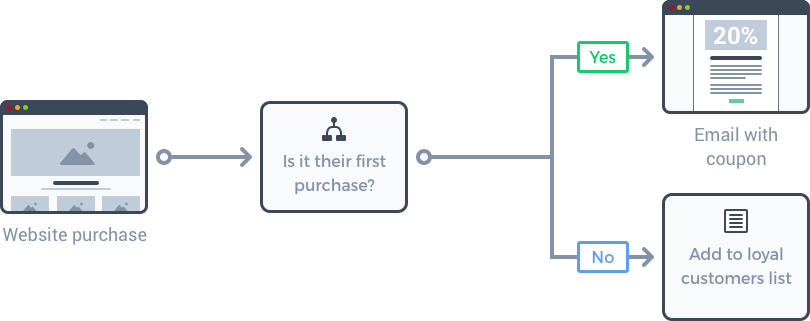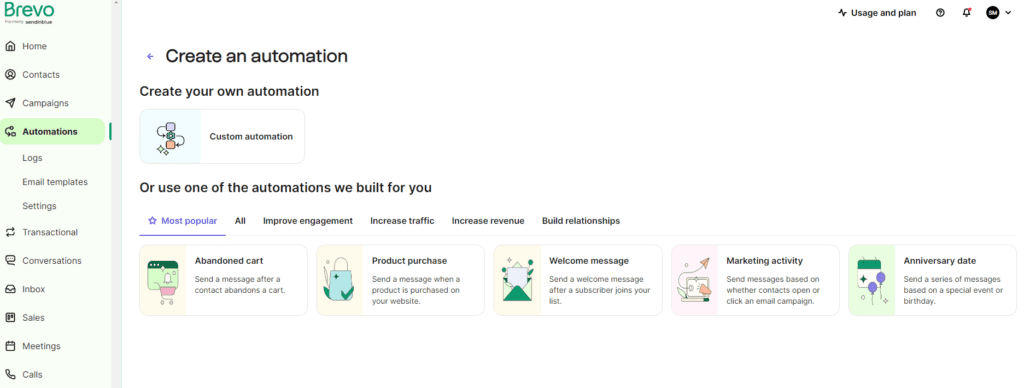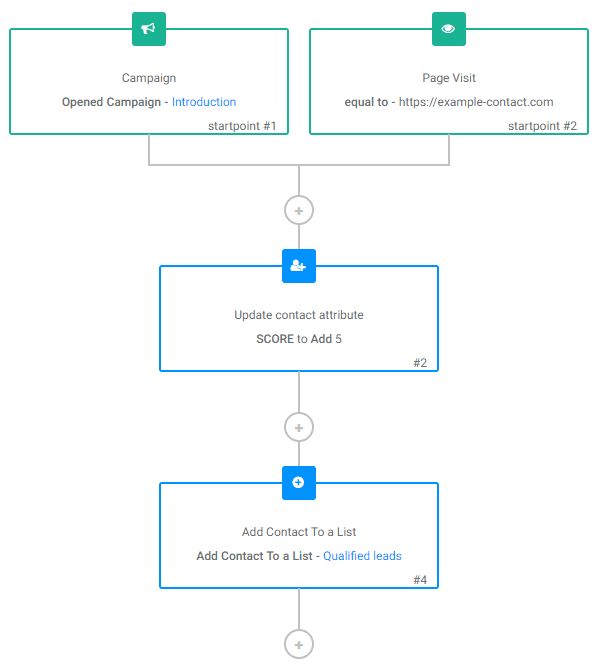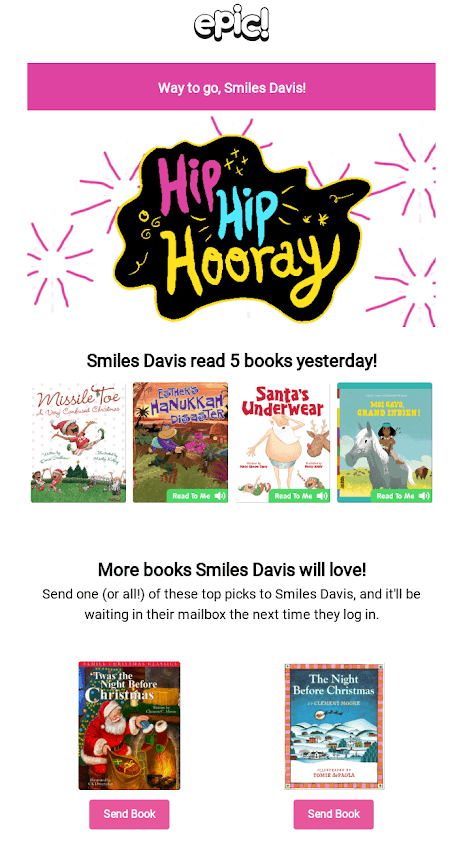
Marketing automation has become an essential tool for today’s digital marketers. But, you aren’t alone if you’re still unsure of the term’s exact meaning or how marketing automation software can streamline your strategy. So, let’s dive straight into the question at hand: What is marketing automation and how does it work?
Once reserved for those with enterprise-level marketing budgets, more and more businesses are now recognizing the value of marketing automation. And luckily, with the emergence of new solutions made for smaller teams (and budgets), it has also become much more accessible.
Automation empowers marketers in all types of industries and organizations to drive marketing ROI while improving their customer experience.
If you haven’t already, now is the perfect time to start building better customer relationships and saving time with marketing automation.
Table of Contents
What is Marketing Automation?
Marketing automation is the use of software that enables marketers to automate marketing tasks. This might include multichannel digital marketing campaigns or managing contacts in their database.
Marketing automation comes in many different forms, depending on the aims and activities of your marketing team. You can learn more about the specifics of automated campaigns for target audiences in our article on B2C marketing automation.
Marketing automation vs. CRM
If you’re already familiar with the concept of Customer Relationship Management (CRM) you may ask yourself exactly how this differs from marketing automation.
While it is true that an effective CRM strategy works hand in hand with marketing automation, they are not one and the same. As the name suggests, marketing automation centers around… marketing — particularly improving the process of capturing and nurturing leads. CRM is more sales focused and helps sales teams to convert leads and manage the customer lifecycle.
What are the benefits of marketing automation?
Marketing automation software has grown in popularity in recent years. In fact, over 90% of marketers consider it “very important” to the overall success of their digital marketing.
So, how exactly can automation tools help marketers improve their results?
Marketing automation has two key benefits:
- Saving time and money by reducing manual and repetitive tasks, and letting the software do the work for you.
- Improving customer experience through personalized journeys targeted toward the needs of each customer.
This increased efficiency allows you to focus on what’s important — your marketing strategy. As a result you can devote more time to developing and scaling your activities. Insights from your marketing automation platform can also show where your efforts are most fruitful, leading to better ROI.
On top of this, marketing automation helps create a more effective customer journey that not only increases conversions but also strengthens the longer-term relationship and improves retention. Through more targeted marketing, you can ensure customers receive the right message at the right time to boost conversions and connect with them on a personal level.
What can marketing automation be used for?
For many, the first example that comes to mind is email marketing automation — sending automated emails triggered by defined conditions.
But aside from email campaigns, you can also use marketing automation software for activities on other marketing channels. These include:
- SMS & WhatsApp messages — for example ecommerce sites may send automated order confirmations via SMS/WhatsApp. Or when organizing an event, businesses can keep event attendees in the loop with automated updates.
- Social media — some platforms enable you to schedule and publish content across different channels, or send automated responses to messages you receive.
- Landing pages — if your landing page includes a signup form, you can use marketing automation to add new leads to your contact lists and follow up with them.
Aside from multi-channel campaigns and content, you can also automate various marketing processes, such as:
Segmentation and contact management
Marketing automation can simplify the process of managing your lists and segmenting contacts based on different criteria. For example, a contact might be added to your “qualified leads” list if they visit your pricing page.

You can also automatically update contact information depending on customer behavior. For example, clicking a certain link in your emails could trigger a subscriber to be associated with a particular interest.
Lead scoring
Marketing automation is a powerful tool in lead qualification — that is, determining whether a prospect is likely to be worth your valuable time and energy. By creating a lead scoring model, you can assign points to leads when they perform actions that suggest they are on the right track for conversion.

Now you know enough to get your bearings, let’s take a closer look under the hood of marketing automation.
How does marketing automation work?
If you’re just getting started, you’ll want to spend some time looking into the different automation tools available.
Marketing automation software
With its increasing popularity, there is now a wider choice of marketing automation solutions. Each platform differs in its focus and offers varying functionalities. For example, some are geared towards ecommerce whereas others are a better fit for small businesses or B2B marketing purposes.
While a lot will depend on your budget, there are certain key features to look out for in marketing automation software:
- Multichannel marketing campaigns for different customer journeys
- Visitor tracking to know who is looking at your website and how they are using it
- Reporting and analytics for evaluating performance
- Segmentation to separate your lists based on different criteria like contacts’ behavior or interests
- Lead management for different stages of the customer journey, from lead generation and capture to nurturing
- A/B testing of different customer journeys and content to automatically select the best performing option
Ready to take the plunge? Check out this roundup of the best marketing automation platforms.
Implementing a marketing automation strategy
As you have seen, marketing automation offers a wealth of opportunities for your business. But how exactly can you get started with it?
The steps below will take you through the process of using automation software from start to finish.
Looking for an intuitive automation platform to optimize your marketing efforts?
Power up your marketing with BrevoThe Marketing Automation platform offers features like an easy-to-use workflow editor, website visitor tracking, and A/B testing for user journeys. |
On the Brevo Free plan you’ll have access to the full suite of marketing automation features for up to 2,000 contacts. So you can try it out without blowing your budget. Or if you need more, the premium plan allow you to target an unlimited number of contacts in your automation workflows.
1. Decide on your goals
As with any area of marketing, your starting point should be defining what you’re aiming to achieve. Perhaps it’s to generate more leads or to improve retention. Depending on your goal, you’ll then be able to work out how marketing automation can best help you get the desired results.
2. Identify the target contacts
The next question to ask yourself is which segment of customers you’ll target. This could be leads you have already acquired or certain website visitors that you want to convert.
Marketing automation tools like Brevo hold valuable insights into your contacts — from their engagement with your previous campaigns to whether they have visited a specific page on your website.

3. Build your workflow
Now you’re ready to create your marketing automation workflow. This is the set of rules that trigger your desired actions for a customer journey.
But don’t worry, it’s not as complicated as it sounds — especially with Brevo! Our platform comes equipped with ready-to-use workflow templates for different scenarios, including follow-ups with subscribers who engage with a campaign or personalized emails to shoppers based on their activity on your ecommerce site. You can then customize these templates to your needs or create your own from scratch.

4. Monitor performance
Once you’re happy with your workflow, you’re ready to go!
But hold on just a second. That doesn’t mean your work is done.
To get the most out of marketing automation it’s important to continually track performance. Your platform should offer the functionality of real-time statistics to track activities like the number of campaigns sent, or metrics around engagement and conversions. This will help you refine and improve your strategy as you go.

Best practices for effective marketing automation
Now you know the process of using marketing automation, here are some tips to help you maximize your success.
Plan out your user journeys
With the excitement of a new software that offers endless opportunities, it’s easy to get ahead of yourself and dive straight in.
However you should always begin by mapping out the journey customers should take, covering the key stages from discovering your brand to converting. This will help you move customers through your sales funnel and form the basis of your automation workflows.
Send the right content
Even if you create the perfect automation workflow, without relevant to match you’re unlikely to see results. It must fit who you’re targeting and where they are in the journey to becoming a paying customer. For example, do they already know a little about your brand’s offer? Are they showing signs of being close to conversion?
Don’t forget that a central benefit of automation is that it empowers you to be even more targeted in your marketing. Use this to your full advantage by considering how you can create personalized experiences at each touchpoint in the customer journey based on information you have gathered.

Don’t set and forget!
While marketing automation has the potential to save you significant time in the long term, don’t be tempted to leave the software to do all the work and just hope for the best. It’s important to keep a close eye on your key metrics to ensure you’re on track and help you pinpoint any areas for improvement.
Start with the basics
If you’re still new to marketing automation, it’s natural to feel a little overwhelmed by all the possibilities available to you.
In this case, start small by identifying areas of your marketing efforts that could benefit from automation. This might be setting up a series of onboarding emails for new customers and subscribers or sending messages like birthday emails to mark special events.
Once you’re confident with the basics you can move onto more complex automation scenarios, such as workflows that take customers through the purchase process with the right message at the right time.
Make sure your contact lists are in order
The foundation of successful marketing automation is a reasonably-sized database of quality contacts. Without first consolidating a flow of relevant leads, your investment in automation will have limited impact.
But, don’t get caught in the trap of buying contact lists either — these contacts will engage poorly with your campaigns. There is no point spending time on a marketing automation strategy to build relationships with potential customers if they were never interested in the first place.
If you’re looking for effective ways to attract quality signups, check out these top email list-building tactics.
Further reading: 7 Marketing Automation Best Practices to Maximize Your Results
Accelerate your growth with marketing automation
You should now have a clearer understanding of what is marketing automation, as well as how you can use it to grow your marketing. The next step… giving it a try!
If you’ve already done your research on different software, you probably found that many platforms are too expensive for anything but a large enterprise. Made for growing businesses, Brevo offers a more affordable and easy-to-use solution that doesn’t compromise on functionality. You can get started straight away with the Free plan, which allows you to use marketing automation for up to 2,000 contacts.
So no more excuses — time for you to give marketing automation a shot and see the difference it has on your results.






